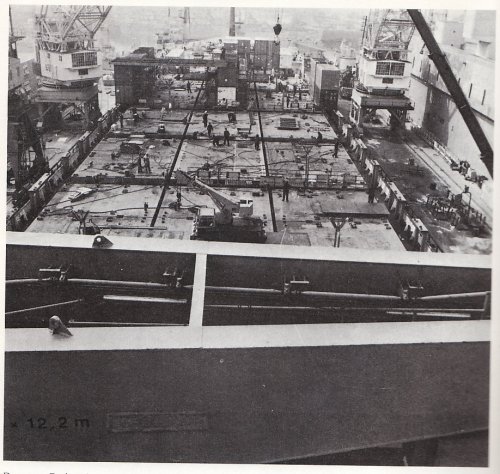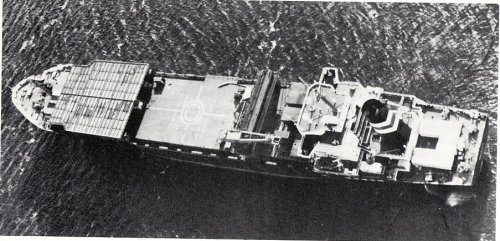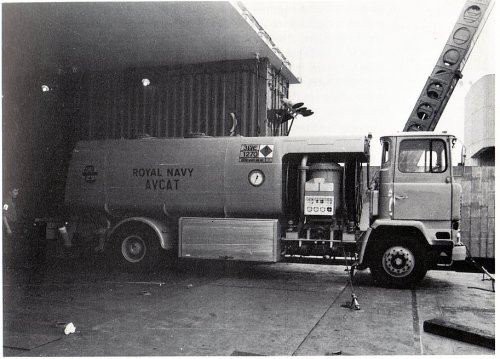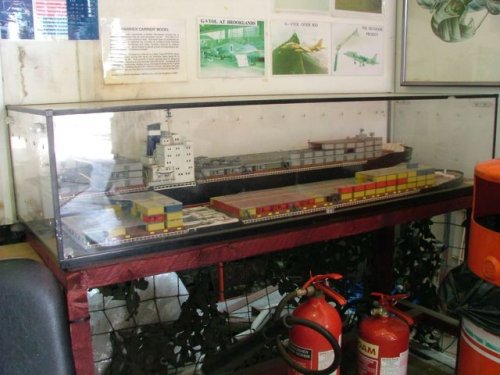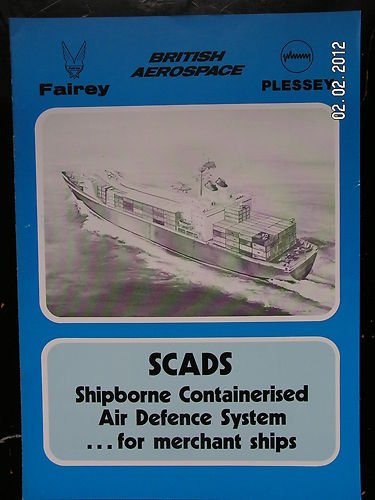- Joined
- 9 October 2009
- Messages
- 21,979
- Reaction score
- 13,647
A Quick and Cheap Power Projection Alternative for Japan
by KYLE MIZOKAMI on Jan 26, 2012 • 4:53 pm

Helicopters and air-cushioned landing craft ferry troops and equipment ashore in a computer-generated conceptual image of an afloat forward staging base. The AFSB concept provides an afloat platform for in-theater military operations and enhances the U.S. military’s force projection capability.
Over at the USNI Blog, Galrahn posted a link to a marketing article by the shipping company Maersk Line. Galrahn calls it “A Potential Plan B for Seabasing“. The article discusses converting Maersk commercial container ships into Afloat Forward Staging Bases, complete with everything from a 14 V-22 Osprey-capable flight deck to the ability to load LCACs at sea. Watch the video, it’s really interesting.
This may be a “Plan B” for the U.S. Navy, but it’s also a compelling “Plan A” for other countries, in this case the Japanese Maritime Self Defense Forces. A converted shipping vessel would plug a lot of holes in Japan’s limited power-projection capability. The ships would still have a fundamentally defensive function, and would accommodate the following roles:
•Support of amphibious operations. Japan has a need for dedicated amphibious ships, particularly in
the Senkaku Islands. A ship like this could provide command and control and act as mother ship to
a number of smaller ships, particularly Joint High Speed Vehicle-type ships. Another vessel would
have to carry LCACs into theater, but that’s where the Osumi-class LSTs come in.
•Disaster relief. A 1,140 foot ship with a 140 foot beam could pack a lot of disaster relief supplies.
Build in extra water desalination, electricity generation, and an extensive medical suite on par with
the Wasp-class amphibious ships and you’d have a capable platform for responding to natural disasters
of the 3/11 variety.
•Sea control. Due to their size, most of the islands in the Senkaku chain are incapable of basing
warplanes, meaning that air power has to be projected from Okinawa and the mainland. This could be
a compelling and affordable first step for Japan in the direction of fixed-wing naval aviation. Modifying
the Hyuga-class helicopter destroyers for fixed-wing is not a good solution: American big-deck
amphibious ships such as Wasp and Makin Island can only accommodate 13-15 F-35Bs in a sea control
mission. Hyuga and her sister ship Ise are only half as large in displacement, with a flight deck 50
meters shorter than the Wasp-class, which doesn’t bode as well for F-35 accommodations. Afloat
Forward Staging Base has lots of flight deck.
Such a ship would be very useful in defending Japan’s far-flung archipelago, carrying a small F-35 complement, ground troops, transport helicopters, medical services, command and control–the whole package, or some mix of it. Offload the helicopters to Hyuga to increase deck space for F-35s. Even better, have more than one AFSB.
There are downsides. Having the bridge 2/3 of the way down the flight deck is not ideal for aircraft, especially fixed-wing. A converted shipping vessel is not built to take damage the way purpose-built naval vessels are. The ship would need to be strongly defended. But you can’t have everything.
Can’t buy a big amphibious vessel outright? The Diet can’t decide to fund a disaster relief ship? Don’t have $8-13 billion dollars to fund a supercarrier? AFSB can sort of do all of these things, for less money! It’s not a perfect solution to everything, but it’s a far more affordable one.
http://newpacificinstitute.org/jsw/?p=9830
by KYLE MIZOKAMI on Jan 26, 2012 • 4:53 pm

Helicopters and air-cushioned landing craft ferry troops and equipment ashore in a computer-generated conceptual image of an afloat forward staging base. The AFSB concept provides an afloat platform for in-theater military operations and enhances the U.S. military’s force projection capability.
Over at the USNI Blog, Galrahn posted a link to a marketing article by the shipping company Maersk Line. Galrahn calls it “A Potential Plan B for Seabasing“. The article discusses converting Maersk commercial container ships into Afloat Forward Staging Bases, complete with everything from a 14 V-22 Osprey-capable flight deck to the ability to load LCACs at sea. Watch the video, it’s really interesting.
This may be a “Plan B” for the U.S. Navy, but it’s also a compelling “Plan A” for other countries, in this case the Japanese Maritime Self Defense Forces. A converted shipping vessel would plug a lot of holes in Japan’s limited power-projection capability. The ships would still have a fundamentally defensive function, and would accommodate the following roles:
•Support of amphibious operations. Japan has a need for dedicated amphibious ships, particularly in
the Senkaku Islands. A ship like this could provide command and control and act as mother ship to
a number of smaller ships, particularly Joint High Speed Vehicle-type ships. Another vessel would
have to carry LCACs into theater, but that’s where the Osumi-class LSTs come in.
•Disaster relief. A 1,140 foot ship with a 140 foot beam could pack a lot of disaster relief supplies.
Build in extra water desalination, electricity generation, and an extensive medical suite on par with
the Wasp-class amphibious ships and you’d have a capable platform for responding to natural disasters
of the 3/11 variety.
•Sea control. Due to their size, most of the islands in the Senkaku chain are incapable of basing
warplanes, meaning that air power has to be projected from Okinawa and the mainland. This could be
a compelling and affordable first step for Japan in the direction of fixed-wing naval aviation. Modifying
the Hyuga-class helicopter destroyers for fixed-wing is not a good solution: American big-deck
amphibious ships such as Wasp and Makin Island can only accommodate 13-15 F-35Bs in a sea control
mission. Hyuga and her sister ship Ise are only half as large in displacement, with a flight deck 50
meters shorter than the Wasp-class, which doesn’t bode as well for F-35 accommodations. Afloat
Forward Staging Base has lots of flight deck.
Such a ship would be very useful in defending Japan’s far-flung archipelago, carrying a small F-35 complement, ground troops, transport helicopters, medical services, command and control–the whole package, or some mix of it. Offload the helicopters to Hyuga to increase deck space for F-35s. Even better, have more than one AFSB.
There are downsides. Having the bridge 2/3 of the way down the flight deck is not ideal for aircraft, especially fixed-wing. A converted shipping vessel is not built to take damage the way purpose-built naval vessels are. The ship would need to be strongly defended. But you can’t have everything.
Can’t buy a big amphibious vessel outright? The Diet can’t decide to fund a disaster relief ship? Don’t have $8-13 billion dollars to fund a supercarrier? AFSB can sort of do all of these things, for less money! It’s not a perfect solution to everything, but it’s a far more affordable one.
http://newpacificinstitute.org/jsw/?p=9830

